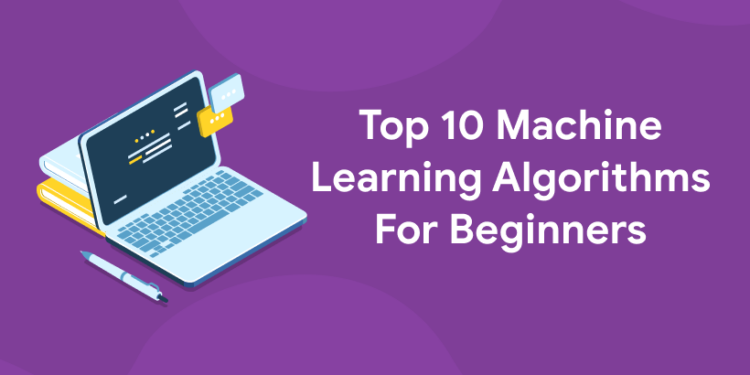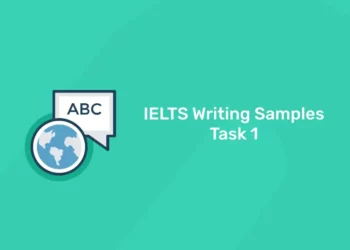Table of Contents
Most of us have probably heard about machine learning at some point or another, but with so many different algorithms out there and so many different uses, it can be difficult to know where to start. Machine learning is one of the hottest areas in computer science, and it’s important to understand what algorithms are used in this area before diving too deep into this field of study. Machine learning algorithms are often used in conjunction with each other in order to reach optimal levels of accuracy on tough problems such as predicting credit card fraud or finding influencers on social media.
What is Machine Learning?
1: Which of the following algorithms is most suitable for classification tasks?
Machine learning is a subset of artificial intelligence that deals with the creation of algorithms that can learn and improve on their own by making data-driven predictions or decisions. The aim is to allow computers to handle tasks that are too difficult or time-consuming for humans. Machine learning algorithms are often categorized into three main types: supervised learning, unsupervised learning, and reinforcement learning. Supervised learning algorithms are those where the training data includes labels or target values. Unsupervised learning algorithms, on the other hand, are used when the training data does not include labels.
Simple Linear Regression
Simple linear regression is one of the most popular machines learning algorithms and is used to find the relationship between two variables. The algorithm is used to predict a continuous value, such as a price or quantity. To use this algorithm, you need to have a dataset with two columns: the independent variable (x) and the dependent variable (y). You also need to know the correlation coefficient r. Linear regression algorithms in machine learning works best when x is large enough that there are many instances where y = 0.
You will also need a good starting point for estimating your y-intercept b0 before running your linear regression analysis by doing an initial scatter plot and observing the trendline
One way to estimate b0 would be using this equation: b0 = mean(x) – . After you run your analysis, it will generate two values for each case in your data set: slope m and intercept b. The next step is to create a new column that consists of the predicted y-value. A new column can be created by taking the result from the formula below, substituting X for all occurrences of x and Y for all occurrences of y. Y = β0 + β1X + ε
This then leads us to another problem. If we want to do any other statistical tests on our data, we now have duplicate information about Xs and Ys in our data set. We can easily solve this problem by transforming Y into 1/Y which solves both problems at once.
Enroll in our latest machine learning course in the Entri app
Logistic Regression
Logistic regression algorithms in machine learning is a supervised learning algorithm that is used for classification. Logistic regression is a linear model that can be used to predict a binary outcome. The logistic function is used to map the input to the output. The logistic function is defined as $$ p(y x) = \frac{1}{1+e^{-x}} $$
This equation defines what the probability of an event happening is given a particular value, or how likely it is. It makes sense that we would use this type of function to classify things into two categories, because it takes one number and maps it linearly to another number in a way where all of the values are between 0 and 1, meaning they’re all on a scale where they could happen with any value of x.
Knowing which values are more likely than others means you can use this function in order to make predictions on an outcome without actually doing anything other than calculating probabilities. Imagine if there were only 2 classes: class A has a 60% chance of happening and class B has 40% chance of happening. Logistic regression will find the best possible combination of weights so that when mapped back out again, class A will have a 63% chance of occurring and class B will have a 37% chance of occurring.
k-Nearest Neighbors
k-Nearest Neighbors is a supervised learning algorithm that can be used for both classification algorithms in machine learning and regression algorithms in machine learning. The k in k-NN refers to the number of nearest neighbors the algorithm will use when making predictions. For example, if k=3, then the algorithm will use 3 nearest neighbors when making predictions. One advantage of using k-NN over other algorithms is that it can handle missing data well. Additionally, it has been shown to outperform other algorithms when there are small sample sizes or when there are many features. Decision Trees: Decision trees are one of the most commonly used machine learning algorithms because they allow humans to easily understand their decisions. They consist of two parts: split nodes and leaf nodes. Split nodes represent decisions on what attributes to look at next. Leaf nodes represent actual values that have been determined as part of the decision tree process. An example would be splitting based on whether or not an email contains spam words (i.e., does the email contain buy, money). Split nodes are then checked until all leafs have been found and either selected or not selected as spam messages.
Artificial Neural Networks (ANNs)
ANNs are the building blocks of deep learning, which is a subset of machine learning. They are similar to our brain cells and can learn by example. When presented with a new problem, they will try to find a solution by looking for patterns in data. The more data they have, the better they can learn. ANNs have been used for a variety of applications including computer vision, speech recognition, natural language processing, and even self-driving cars.
In order to create an ANN, you need three layers:
– A layer that inputs data (input layer)
– A layer that processes data (hidden layer)
– A layer that provides outputs based on processed input (output layer) Each layer has neurons that take information from the previous layer and transform it into something different. For example, if we have an input neuron with a value of 3 and another neuron below it with a value of 1, the output neuron would be 2 because there is only one way to combine those two values.
Enroll in our latest data science in Entri app
Decision Trees
A decision tree is a supervised learning algorithm that can be used for both regression and classification algorithms in machine learning tasks. The algorithm works by splitting the data into several groups, called leaves, based on a certain criterion. For each leaf, the algorithm then predicts the target value. The advantage of using a decision tree is that it can handle both categorical and numerical data. One disadvantage of this algorithm is that in order to predict future values, one needs to know the entire dataset. It’s also important to note that since it uses many nested if-else statements, this can quickly lead to an increase in computation time with very large datasets. Decision trees are not able to take into account complex interactions between variables and cannot make out any missing values.
Naive Bayes Classifier
Naive Bayes is a probabilistic machine learning algorithm that can be used for binary classification. In binary classification, there are only two possible outcomes: positive or negative. Naive Bayes classifiers are based on the naive assumption that all features are independent of each other. This means that the algorithm doesn’t take into account any relationships between features when making predictions. Even though this assumption is often inaccurate, naive Bayes classifiers still perform well in many situations. They’re especially popular in text classification algorithms in machine learning tasks, where they can be used to identify spam emails or sentiments in movie reviews. One example of how naive Bayes works would be if we had an email with the subject line I’m coming home, and it was classified as positive. The Naive Bayes model would then automatically classify all other emails with the same subject line as positive because even though they might have different content, they share a common feature (the subject line).
K-Means Clustering
K-Means clustering is one of the most popular machine learning algorithms for grouping data points together. It’s easy to understand and implement, which makes it a great choice for beginners. Here’s how it works: first, you specify the number of groups, or clusters, that you want your data to be divided into. Then, the algorithm finds the center point of each cluster and assigns data points to the nearest cluster. Finally, it iterates through the data points until it converges on the best solution. That is, it stops changing the positions of data points when there isn’t much change in where they are clustered. The result? A series of clusters that contain similar items in them.
It can also be used with text documents and images by converting words or pixels into numerical values that can then be analyzed using K-Means Clustering. One downside to this algorithm is that if your input data has no natural grouping or structure, you may end up with meaningless clusters–for example, if you were trying to group people who ordered pizza based on their age but some people only ordered pizza once.
Principal Component Analysis (PCA)
Principal component analysis is a technique used to reduce the dimensionality of data. It does this by finding the directions of maximum variance in the data and projecting the data onto these directions. PCA is often used as a pre-processing step for machine learning algorithms. For example, it can be used to remove noise from the data before classification or clustering, or can be used in unsupervised feature extraction. PCA can also be thought of as a type of dimensionality reduction, which will result in significantly fewer principal components than there are original variables. Dimensionality reduction techniques such as PCA help with visualization because they create axes along which most of the variation in the data is visible.
Support Vector Machines (SVMs)
Support Vector Machines are a powerful tool for both classification and regression tasks. The algorithm works by finding the optimal hyperplane that separates data points in two classes. Once trained, the SVM can be used to make predictions on new data points. SVMs are a popular choice for machine learning due to their high accuracy and flexibility. However, they can be difficult to tune and can be slow to train on large datasets. For example, Radial Basis Function (RBF) networks use radial basis functions as a classifier. RBFs take into account every input variable when attempting to classify an input vector. Like SVMs, RBFs have been shown to have good accuracy with few tuning parameters and they tend to be fast. However, RBFs do not work well with noisy data sets or with complex nonlinear relationships between variables.
Random forest algorithm
The Random Forest algorithm is a supervised learning algorithm that can be used for both regression and classification tasks. It creates a forest of random decision trees, each of which is trained on a subset of the data. The final predictions are made by averaging the predictions of all the individual trees. This algorithm is fast, accurate, and scalable, making it a good choice for many machine learning tasks. A disadvantage of this algorithm is that it does not take into account the relationships between features (unlike other algorithms). Another disadvantage is that model tuning may require more time. However, since it works well in most cases, random forests remain one of the most popular machines learning algorithms today.











